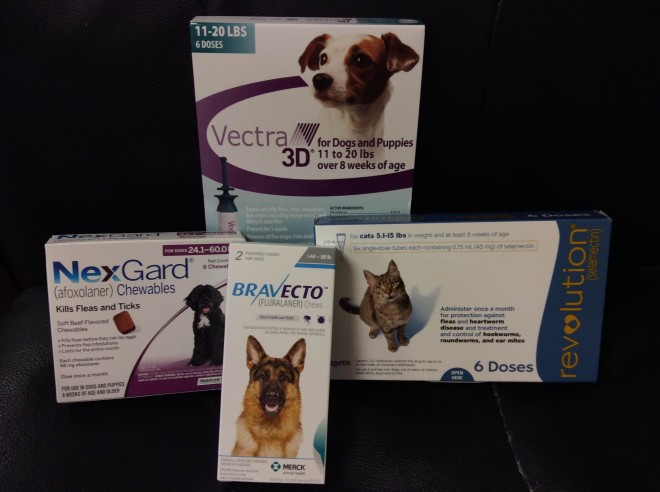
There are so many misconceptions about fleas and ticks with our pets. Hopefully this information will help resolve some of these issues.
MYTH ONE: is that fleas and ticks are only around from about March until November. That is incorrect. In this area they are found all year long. All it takes is a day of above freezing temperatures for them to come out of hibernation and if your pet is not on a preventative they can easily become infested. The ticks that carry several nasty illnesses are very hardy and can become active with the slightest warming trend. We recommend your pet stay on preventative year round, both for their protection as well as the protection of the people they come into contact with. Nobody wants to cuddle a pet with ticks!
MYTH TWO: Dogs and cats are the same and you can use the same thing on them both right? Wrong! Dogs and cats are extremely different in what their bodies metabolize as far as medications and preventions are concerned. Just because you use one preventative on your dogs does NOT mean you can use the same thing on your cat. Pyrethrins for example can be used on dogs in limited amounts, but any amount put on a cat can be fatal. This is one reason we never recommend over the counter flea and tick preventatives. Many of them that are labeled for cats contain chemicals that can be toxic to them. They are much cheaper yes, but they put your cats health at serious risk.
MYTH THREE: If your pet is strictly indoors or only goes outside to use the bathroom then they do not need to be on a preventative because they are not at risk. It is true that their risk is lower than those animals that spent more of their day outside but any pet that is not protected can easily become flea infested. One flea can lay thousands of eggs in its life cycle. So just one single flea that gets in the house can cause major problems that can take months and months of treatments to get under control. There is no magic fix once a house is flea infested. It takes months of having your pet on a good quality prevention as well as house cleaning/ treatment to get rid of them. Your indoor cat that never goes outside and is on the third floor of an apartment won’t get fleas right? WRONG! What about that neighbor downstairs that has pets that are unprotected and get fleas. The heat or air comes on and blows those eggs into the duct work and BAM, now you have fleas in your apartment and your pet is not on anything to kill them.
MYTH FOUR: Only deer ticks carry lyme disease and I have only seen those big ticks on my dog so I don’t have to worry tick borne illness right? WRONG! Any tick has the capability of carrying and passing on tick borne diseases. One of the biggest problem with deer ticks is that they are so small that you most likely would not even see it on your pet. Almost every day we find and treat a dog for a tick borne illness from our routine in-house Heartworm and tick borne illness SNAP tests that are part of your dog’s annual check up.
MYTH FIVE: A flea collar will keep my pet from getting fleas right! WRONG! Flea collars really have no effect on killing or preventing your pet from getting fleas. All they do is leave a powdery residue on your pet that you come into contact with every time you pet them. Additionally over the counter flea collars utilize old toxins that have known health concerns for our pets and for us – particularly children that have a tendency to pet their dog or cat and then put their fingers in their mouth ingesting toxins that could attack their nervous system.
MYTH SIX: The products I can order on line are just as good and cheaper than what my veterinarian sells right? WRONG! There is no guarantee that the products for sale online were stored correctly and therefore may not be effective. Therefore the manufacturer will only guarantee their product if you buy from your veterinarian. Most of the time your veterinarian is comparable in cost anyway when you factor in shipping costs, rebates, etc. There have been reports of counterfeit products as well – if the cost is too good to be true then it is probably not true product!


